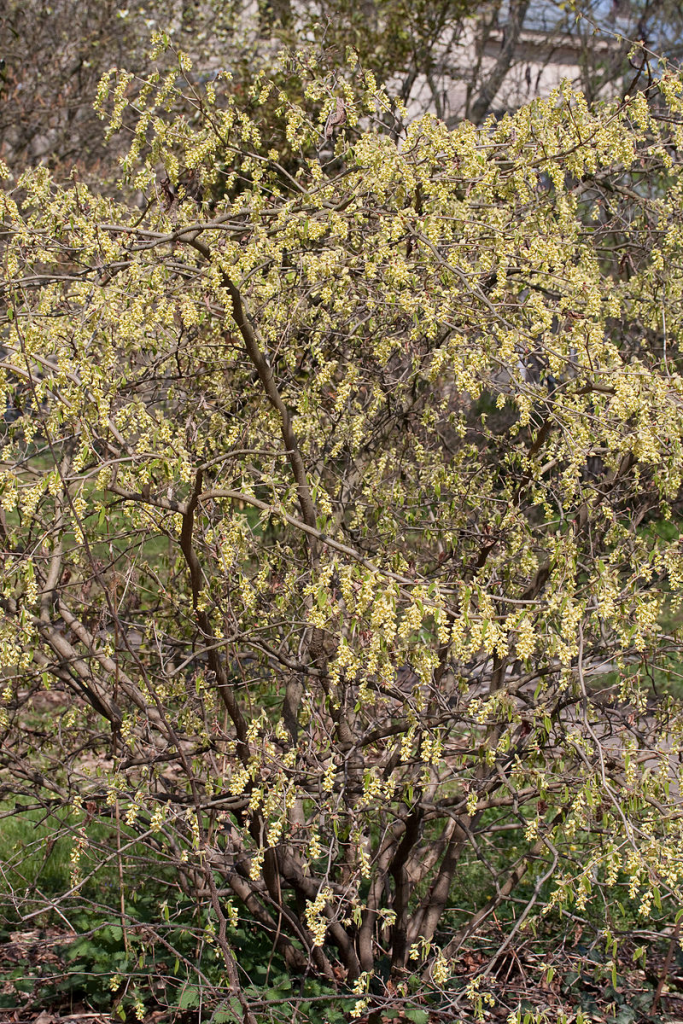
Native to Japan and Korea, this deciduous shrub is a member of the witch hazel family, Hamamelidaceae, that also includes loropetalum and fothergill. It grows 8-15′ tall and has a zig-zag branching pattern and a spreading to rounded form. The leaves are ovate, toothed, and strongly veined. They are 2-4″ long, have grayish undersides, and dark green top sides before turning clear yellow in the fall. In early spring before the leaves emerge, 1-3″ long drooping racemes appear. Each raceme carries numerous fragrant, pale yellow flowers that are bell-shaped and 1-3″ across. The fruit is a 1″ wide woody capsule containing 2 glossy black seeds. Fragrant winter hazel is a good choice for a mixed border as well as for use in fragrance and woodland gardens. The genus name, Corylopsis, comes from the Greek words korylos meaning hazel and opsis meaning like or resemblance and refers to the similarity in appearance of the leaf to that of Corylus. The specific epithet, glabrescens, comes from the Latin word glaber, meaning hairless or smooth, and the suffix -escens, meaning becoming or resembling. Photo Credit Denis.prévôt, Wikimedia Commons

Type: Flowering deciduous shrub
Outstanding Feature: Flowers
Form: Spreading to rounded
Growth Rate: Slow to moderate
Bloom: Racemes of fragrant pale yellow flowers in early spring
Size: 8-15′ H x 8-15′ W
Light: Full sun to part shade
Soil: Average, consistently moist, well-drained, acidic
Hardiness: Zones 5-8
Care: Prune immediately after flowering if needed; plant in an area protected from wind and early frost.
Pests and Diseases: None of significance
Propagation: Seed, stem cuttings
Outstanding Selections:
‘Longwood Chimes’ ( strong fragrance, large flowers, and later and longer bloom time)
‘March Jewel’ (dwarf)
Photo Credit: Wikipedia